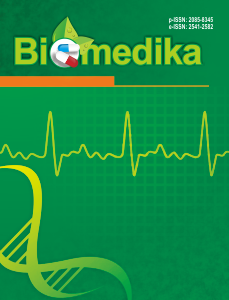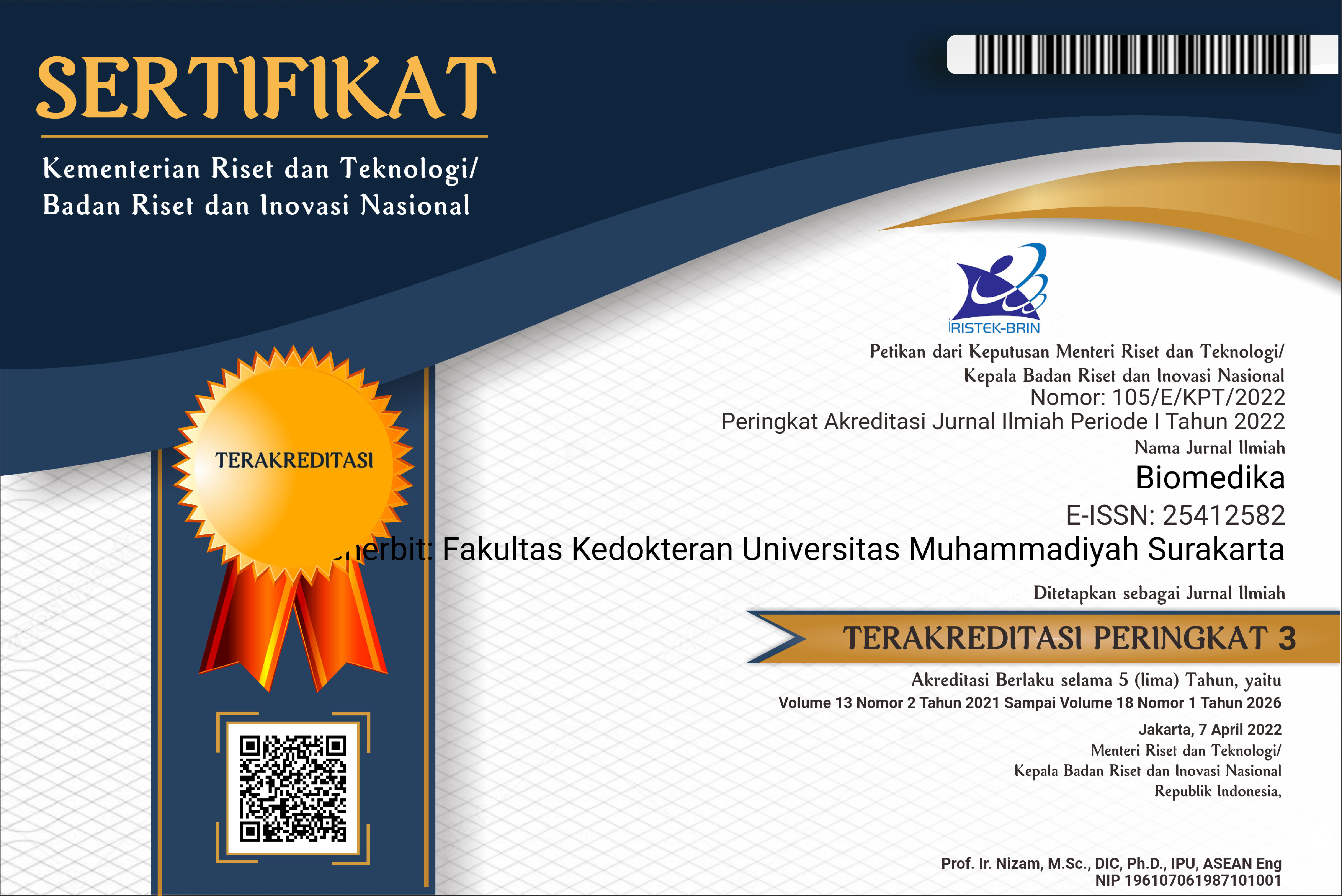Concurrent Dengue and Malaria Infection : A Case Series
DOI:
https://doi.org/10.23917/biomedika.v17i1.7898Keywords:
Malaria, Dengue, Co-infection, Thrombocytopenia, DHP, PrimaquineAbstract
Introduction: Malaria and dengue are endemic in Indonesia, and therefore, may result in the possibility of co-infection. Urban demographic expansion, deforestation, and agricultural settlements in peri-urban areas are known causes of the increase in the probability of concurrent infection of these two diseases. It is reasonable to envisage that the occurrence of concurrent infections would not be rare, mainly during outbreaks of dengue in the rainy season. However, due to non-systematic investigation of both diseases, only a few cases of malaria and dengue co-infection have been reported. These three patients demonstrated co-infection manifestations with good outcomes and prognoses. Case Illustrations: Two cases of co-infection of malaria vivax and dengue fever in male patients aged 35 and 43 years. The difference between these two cases is that one patient had experienced a previous episode of malaria with a fever lasting less than 5 days. Meanwhile, one patient who had never suffered from malaria experienced a relatively longer fever episode, up to 14 days. Thrombocytopenia in these two patients was still above 50,000/µL and rose quickly after anti-malarial administration. The third case was a 47-year-old woman with co-infection of malaria falciparum and dengue. This woman lived in Papua and had been infected with malaria before. This third case showed platelet numbers reaching levels as low as 38,000/µL and hypotension without signs of shock in the critical phase of dengue. The three patients did not show complications from other organs due to malaria or dengue and responded well to antimalarials with good outcomes. These patients were treated with a combination of DHP and primaquine, along with supportive care for fever and fluid management. Conclusion: Whenever co-infection is confirmed, we recommend careful monitoring for bleeding and hepatic complications, which may result in a higher chance of severity. Careful and intense monitoring of fluid requirements is necessary to avoid complications of fluid overload.
Downloads
Downloads
Submitted
Accepted
Published
Issue
Section
License
Copyright (c) 2025 Biomedika

This work is licensed under a Creative Commons Attribution 4.0 International License.












